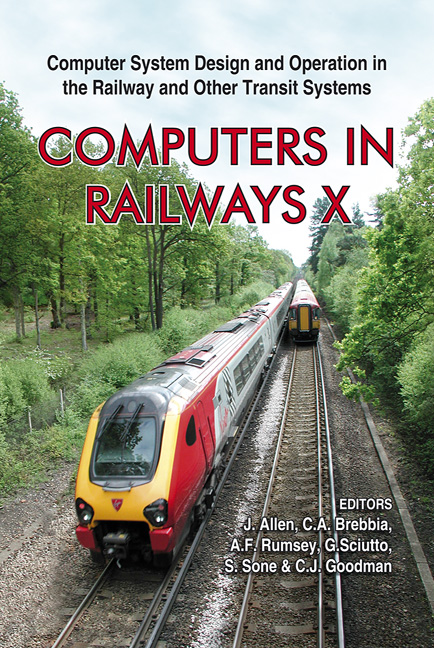Driverless CBTC – Specific Requirements For CBTC Systems To Overcome Operation Challenges
Price
Free (open access)
Transaction
Volume
88
Pages
9
Published
2006
Size
390 kb
Paper DOI
10.2495/CR060401
Copyright
WIT Press
Author(s)
M. P. Georgescu
Abstract
Reliable driverless operation requires specific features implemented at system and subsystem levels of the train control system. Communications-Based Train Control (CBTC) is now proven as the best choice for driverless systems due to inherent high levels of safety and reliability with a low life cycle cost. This paper proposes a systematic approach that may be used to determine the most efficient way to fulfil the requirements specific to each customer faced with driverless operation (green field or re-signaling). It also defines “must have” requirements (functionality) to obtain the desired performance and cost. The paper also addresses issues related to the operability, maintainability, and availability of different types of driverless CBTC systems implementations, and the advantages and disadvantages of each solution. Keywords: driverless, UTO, DTO, STO, CBTC. 1 Driverless operation with Automated Train Control Industry members now unanimously recognize that the hierarchy for automated train control (ATC) systems is defined as Unmanned Train Operation (UTO), Driverless Train Operation (DTO), and Semi-automated Train Operation (STO) equivalent to the definitions in IEC 62290-1 (GAO2, GAO3, GAO4). For the purpose of this paper, both UTO and DTO will be expressed as Driverless operation. CBTC is defined as: Determination of train location, is to a high degree of precision, independent of Track Circuits; Continuous, bidirectional, train to wayside and wayside to train data communications, which can provide significantly more control and status information than is possible with a track
Keywords
driverless, UTO, DTO, STO, CBTC.





